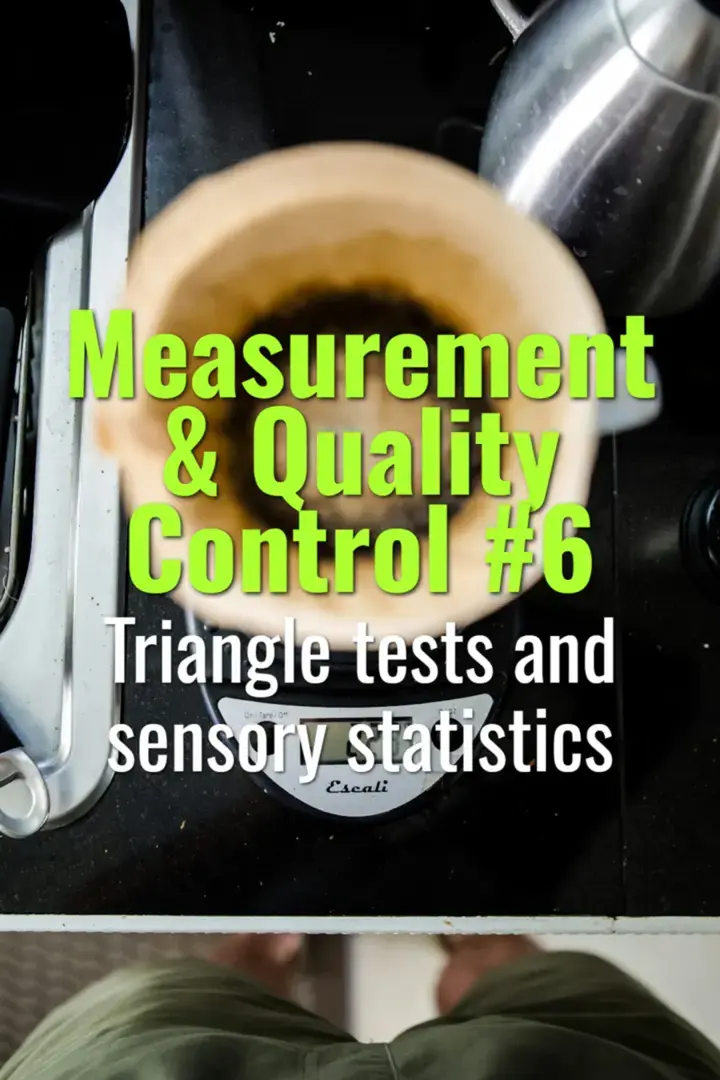Triangle tests and sensory statistics
How to use triangle tests and basic sensory statistics to evaluate differences in coffee samples with confidence.
- Coffee Basics Nerds
- 1 min read
Article 6 of 12 in Measurement & Quality Control/

Triangle Tests
- Definition: A sensory test where tasters receive three cups—two identical, one different.
- Purpose: Determine whether tasters can reliably detect differences between coffees (e.g., different roasts, processing methods, or brew water).
- Procedure:
- Present samples in randomized order.
- Ask tasters to identify the odd cup.
- Record results and analyze statistically.
Sensory Statistics
- Chance Probability: Random guessing gives ~33% correct responses.
- Significance Testing: Use binomial probability to assess if correct identifications exceed chance.
- Example: With 10 tasters, at least 7 correct is statistically significant at p<0.05.
- Applications:
- Validating whether small roast changes are perceptible.
- Testing water chemistry adjustments.
- Assessing packaging or storage impact.
Best Practices
- Use blinded, randomized samples.
- Standardize brew method, ratio, and temperature.
- Use multiple sessions and tasters for reliable data.
Summary
Triangle tests, supported by sensory statistics, provide a rigorous way to determine whether perceived differences between coffee samples are real or due to chance, strengthening quality control decisions.